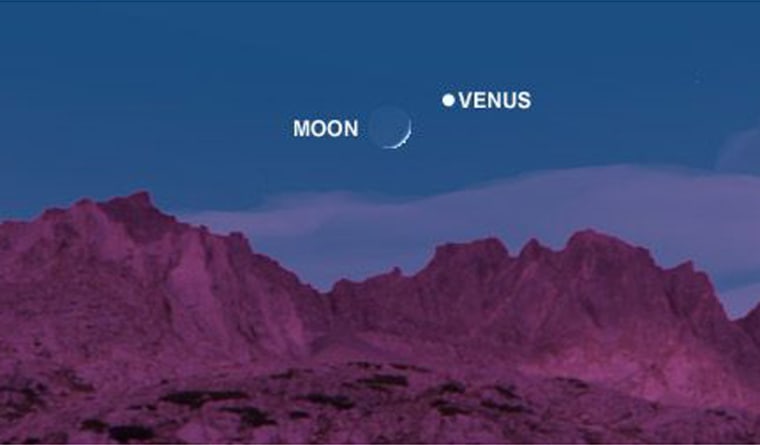On Saturday evening as darkness is falling, take a look toward the west-southwest part of the sky for yet another beautiful celestial tableau formed by a lovely crescent moon and the brilliant planet Venus. Venus will appear to hover above and to the right of the moon.
The pairing is virtually a repeat of their Christmas night get-together. Similar setups occur now on roughly a monthly schedule.
If Venus were stationary and did not appear to move against the star background, then a Venus-moon encounter would occur every 27 days, 7 hours and 43 minutes. This is called a "sidereal month" — the time it takes the moon to circle the Earth once, using the background stars as a reference point.
Since Venus and the moon were together on Christmas night, we might have expected a return engagement this past Wednesday (the 21st) if we tried to apply the "sidereal month rule" to this schedule. Of course that rule didn’t work because Venus is not stationary, but moving in its own orbit around the sun.
So the moon had to travel that much more across the sky to catch up to Venus.
Since the moon appears to move across the sky at roughly 13 degrees per day, it needs three more days to catch up to Venus. That takes us to Saturday evening, where once again we will be treated to an eye-catching sight in our western twilight sky between the two brightest objects in the night sky.
Another factor that must be considered is our own Earth’s movement around the sun. If you looked for the crescent moon this past Wednesday night you wouldn’t have been able to see it because the satellite was at new phase and hence too near to the sun to be seen. That’s because during the 27 days that had elapsed since Christmas, Earth’s movement around the sun would have caused the sun’s position in the sky to shift to the east as well ... in this case, right into the very same region that Venus and the moon occupied on Christmas.
By Saturday, however, the moon will be well clear of the sun and readily visible in the west-southwest with Venus.
If clouds obscure your view of Venus and the moon on Saturday evening, don’t fret. Another opportunity to see them together will come on Monday, Feb. 23.
